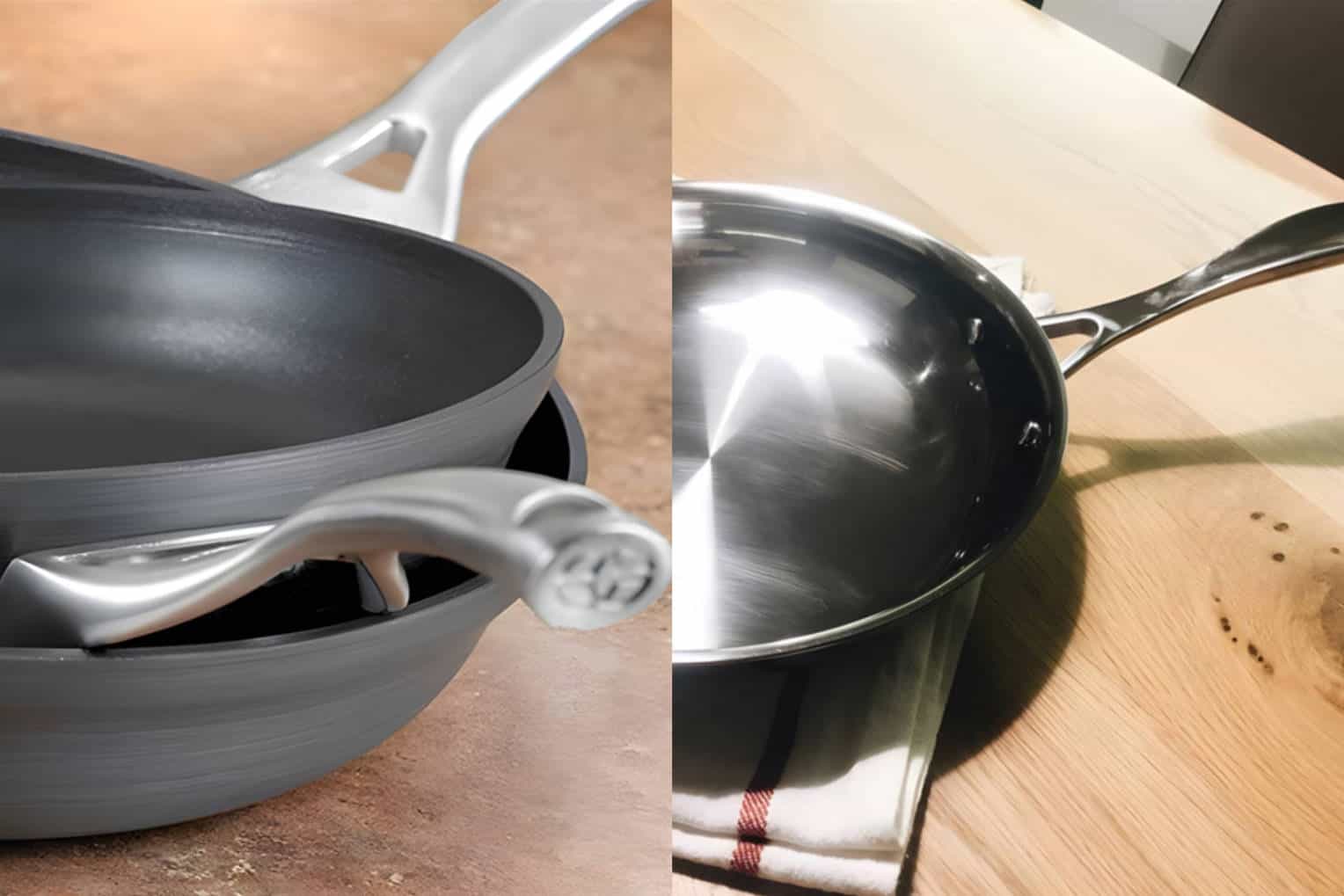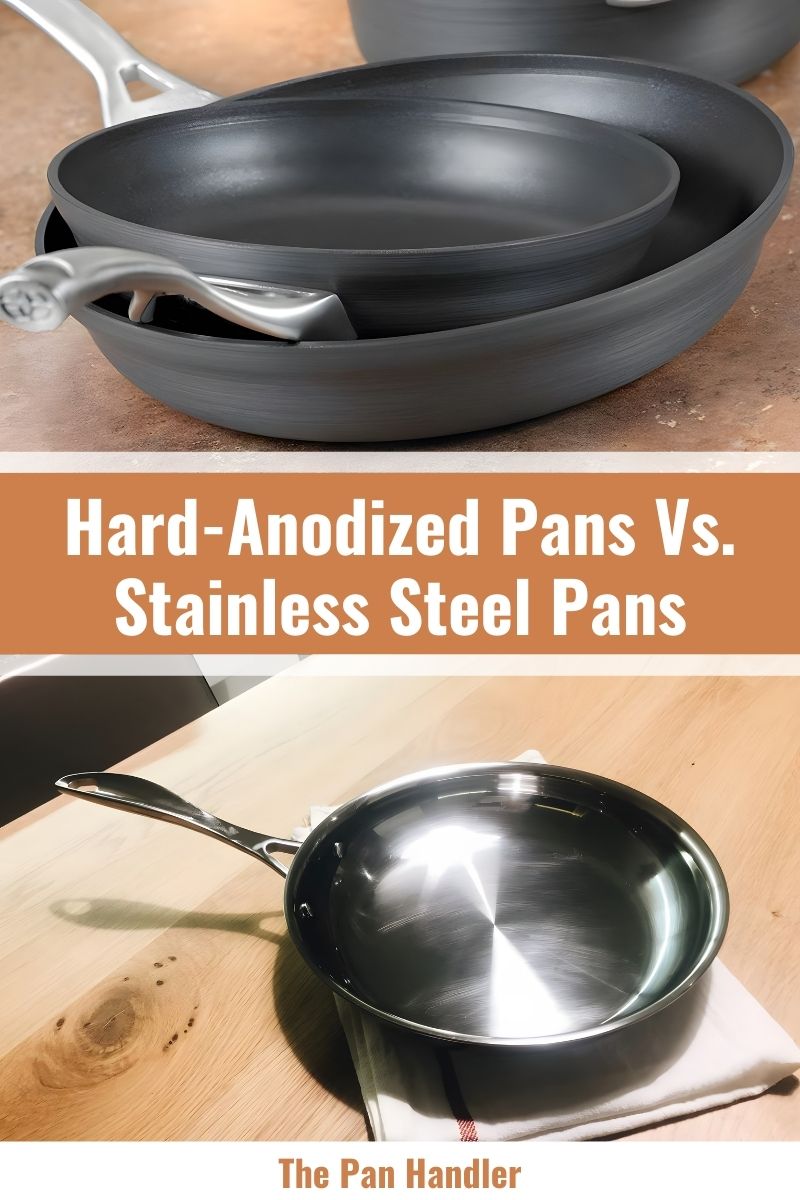
The battle of the best cookware of 2022 is here! To end the speculation that stainless steel is better than hard-anodized pans, here is Hard-Anodized Pans Vs. Stainless Steel Pans: Battle of the Best Pans – 15 Pros to Consider.
To better understand each pan, we must learn its general composition.
What makes Stainless Steel Pans?
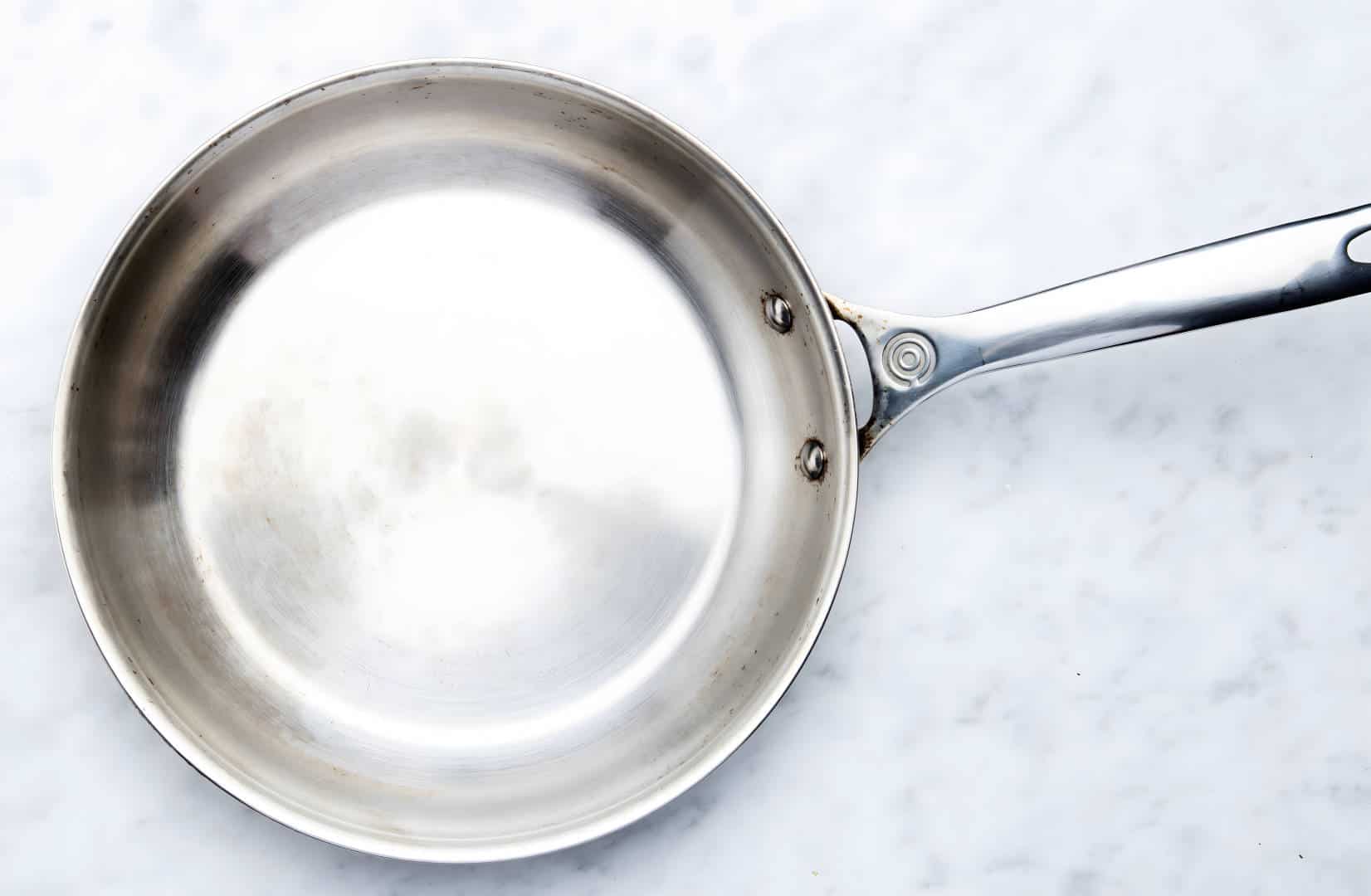
Durable stainless steel plans are made up of different materials, including high-grade iron, carbon, steel, and chromium, which meet the all safety standards. However, please be careful when choosing which stainless steel pan to buy.
Due to the current demand for stainless steel pans, some companies have bypassed the food safety standards. But in general, stainless steel pan is a practical choice for someone who wants to cook.
What makes a Hard-Anodized pan?
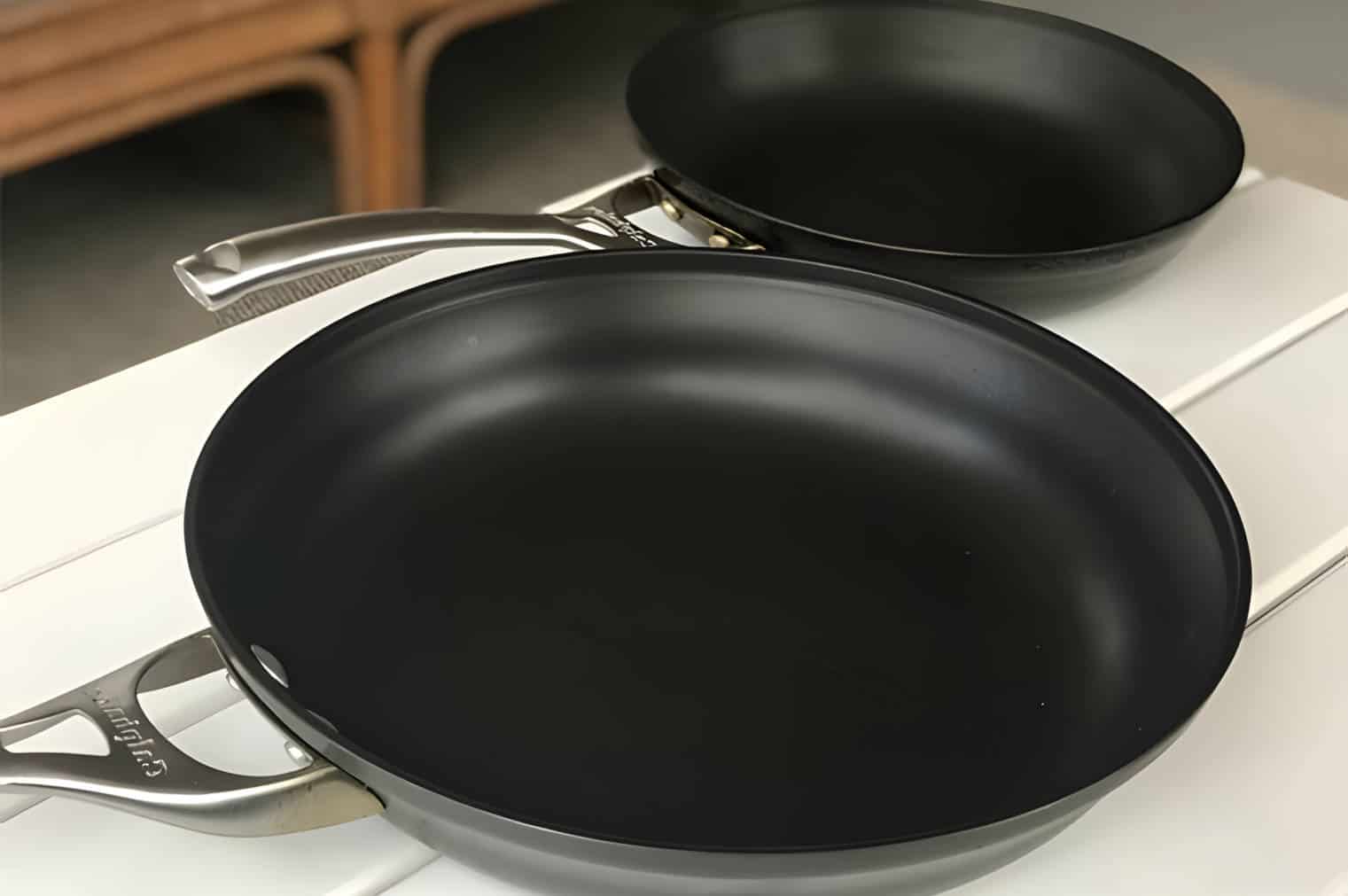
The name hard-anodized for pans sounds pretty futuristic. But do you know that the word hard-anodized refers to an aluminum hardened by an electric and chemical process?
In this process, the aluminum will be first soaked in sulfuric acid. After submerging the aluminum, it will undergo a series of chemical and electrical processes. Then, oxidation takes place, which produces aluminum acid.
After that, the final step takes place where the acid will be cooled to 0 C. At the same time, the electric current is drastically amplified, resulting in fewer surface pores and a highly durable hard-anodized pan.
Stainless Steel Pans Vs. Hard-Anodized Pans
To determine which pan is the best choice, we must check its standard features and edge over other pans.
Stainless Steel Pan
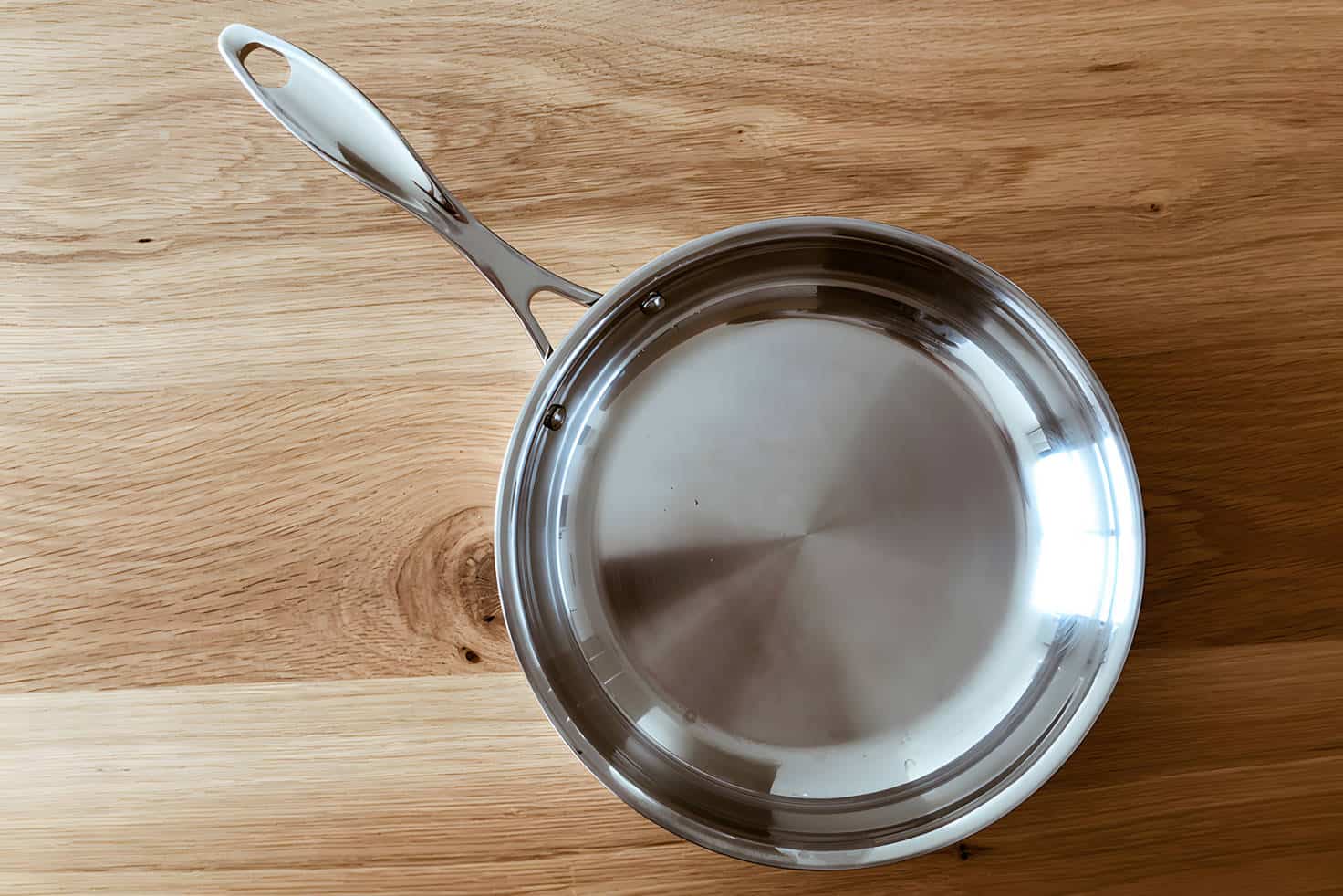
Indisputably, cost-effective stainless steel pans are worth a try. If you want to have a one-stop pan for all the food you cook, then a stainless steel pan is your best choice.
Since it is a stainless steel pan, you won’t mind cooking a hard-boiled egg on it multiple times since it does not have any coating that might be worn out.
You might see a little bit of discoloration, though, but that is just it. The stainless-steel pan will still be as sturdy as when you bought and used it. However, along with its pros are the cons.
Stainless steel pan has a known and existing discoloration issue. That is a given fact. But what most buyers forgot is stainless steel pans are corrosion-resistant only. This means that the pan will be subject to rust by not following the correct care and aftercare steps and procedures.
Gradually, you may see some rust in your pan. I know what you are thinking. Why would a stainless-steel pan rust? The simple answer is that frequent and inappropriate cleaning tools and materials will cause corrosion over time. You must prevent this from happening.
Rusts are harmful, especially when it is mixed with the food you are cooking. Unfortunately, rust is not just the issue. Another thing that we will look out for is the level of chromium in the stainless steel pan that you want to buy.
Stainless steel pans contain a specific amount of chromium that prevents corroding and protects it from unwanted rust. To make a single stainless-steel pan, the company must use stainless steel with around 16% chromium or probably more. Some brands use more than 20% chromium to preserve the stainless-steel pan’s appearance over time.
Other than that, the stainless-steel functions like a regular pan where you can quickly fry and cook your food. With a stainless-steel pan, you can either fry, simmer, or boil your food in it.
Now let us check its rival pan.
Hard-Anodized Pan
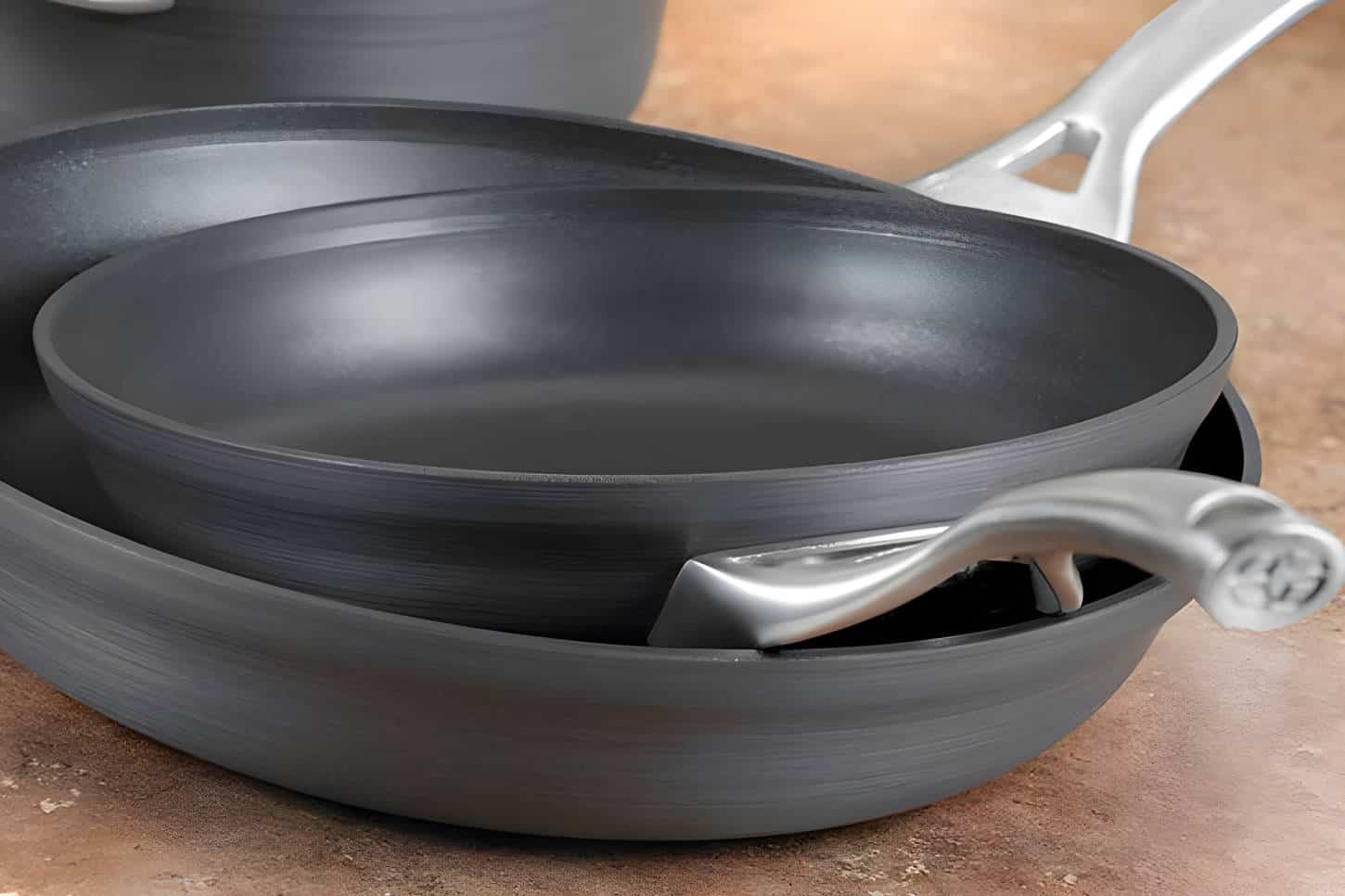
Hard-anodized pans can be compared to a typical nonstick pan with the durability of premium stainless steel pans. It is more durable than stainless steel pans, and it dispenses the heat evenly regardless of whether you use it to cook it over the stovetop or put it inside the oven.
Its build is way thinner than the regular nonstick pans, but it is more effective than the latter, an advantage over other pans. The pan, naturally lighter, can absorb the heat quickly, which means that you can cook your food faster than average.
Also, if you are looking for a cookware or a pan that will help you with your diet, choose a hard-anodized pan. These pans allow you to perfectly toast your bread or fry and cook your food with less to no oil.
It has similar functions to stainless-steel pans to those unfamiliar with hard-anodized pans. Like the former, you can simmer and boil using the hard-anodized pan. It also features rims that prevent drip that prevents any mess when you transfer or pour over the sous, cream, or soup from the pan to the container.
When cleaning the hard-anodized pan, you can gently wash it with water and a soft sponge with dishwashing soap. You need to gently scrub the surface of the hard-anodized pan to take off the grease and odor.
Washing the hard-anodized pans is just like washing your regular nonstick pan. You don’t need any abrasive cleaners to clean it and remove the food particles and odor.
However, before you swipe your card for the hard-anodized pan, you might want to double-check if the handle is made up of plastic or not, as this becomes the primary basis on whether you can use the pan for baking. Unless the hard-anodized pan’s handle is stainless, you can’t use it for baking.
Stainless Steel Pans and Hard-Anodized Pans Pros and Cons: 15 Things to Consider
We have listed both pan types’ complete pros and cons in the table below. May this help you determine which pan type to buy when you go shopping.
Pros | Stainless Steel Pans | Hard-Anodized Pans |
100% Durable | ||
Dispenses Heat Evenly | ||
Can be stacked | ||
Do not release harmful chemicals | ||
Versatile | ||
Scratch-Resistant | ||
Promotes Healthy Cooking | ||
Non-Stick | ||
Easy to Maintain | ||
Plain and Simple | ||
Responsive | ||
Heat Preservation | ||
Cooktops Compatibility | ||
Oven-Safe | ||
Dishwasher-safe |
| |
Cons | ||
Pricey | ||
Hard to Clean | ||
Bad Cooking Performance | ||
Heavy | ||
Stains may show over time |
The above table shows that the stainless steel pans and hard-anodized pans share several similarities with a select few cons.
Upon checking the pros of both pans, the features that they don’t share are the pan’s ‘oven-safe’ and ‘nonstick’ capabilities. But this is a subjective issue and dependent on both the pan’s designer and manufacturer. Do note that some companies have their preferences.
To attain the desired aesthetics for the hard-anodized pans, some opted to have plastic handle and grip bolted instead of metal. This means that if your hard-anodized pan’s handle is oven-safe, then the whole pan is oven-safe.
When it comes to the nonstick feature, we may need to leave this as is. We cannot let this as a determinant since stainless steel pans are designed not to be nonstick.
On the other hand, when it comes to its cons, the hard-anodized pans score 3/5, while the stainless-steel pans score 4/5. The score is pretty close.
The cons show that both stainless steel pans and hard-anodized pans are heavy and probability that they may be stained over time. But when it comes to cleaning and performance, the score goes to hard-anodized pans. Thanks to its nonstick feature!
Points to Ponder: Stainless Steel Pans Vs. Hard-anodized Pans, Which Is the Best Choice?
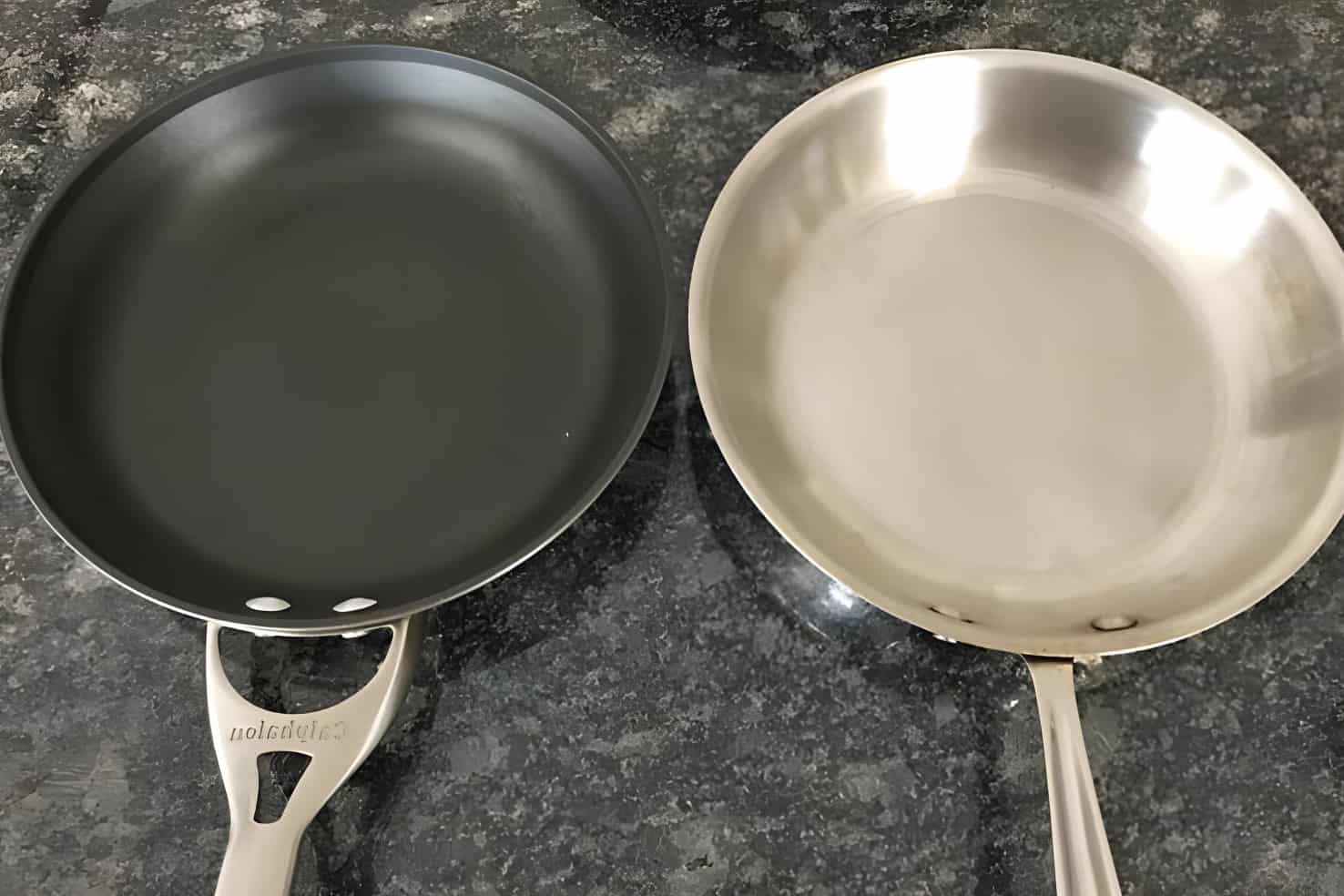
Our best pick would be the hard-anodized pans if we were to choose. They may be a little pricey, but the features show that the hard-anodized pans are worth a try.
We need to look for hard-anodized pans which are 100% oven-safe. Getting a pan that can be used over the stovetop and oven is a great save! This is just our take, though.
Always reflect on your needs when you choose which pan to buy. If you do not need a hard-anodized pan, then you may grab that stainless steel pan and deal with its cons.
Washing Stainless Steel Pans and Hard-Anodized Pans: After Care Guidelines
The only difference when washing stainless steel pans and hard-anodized pans is that you don’t need to exert extra effort in scrubbing the hard-anodized pan’s surface. You do not need any abrasive cleaner either.
But if the stainless steel pans have some burnt food sticking in them, you may need to wash them with warm water.
In some instances that it can’t be removed with warm water, then you may need to boil some water to loosen it. Or you may leave the pan with water overnight and go the water to do some magic to your pan.
Conclusion
Choosing a pan is not easy as they have specific functions. Depending on its usage, some people may choose stainless-steel pans, and some may choose nonstick hard-anodized pans.
Thus, do not swipe for any pan yet. Unless you have answered this question, ‘why do I need this pan?’


Michael Johnson is the founder of Pan Mastery, Inspired by his blacksmith grandfather’s legacy has a deep appreciation for hand-crafted pots and pans, he provides invaluable guides, reviews, and recipes to enhance your culinary journey.

